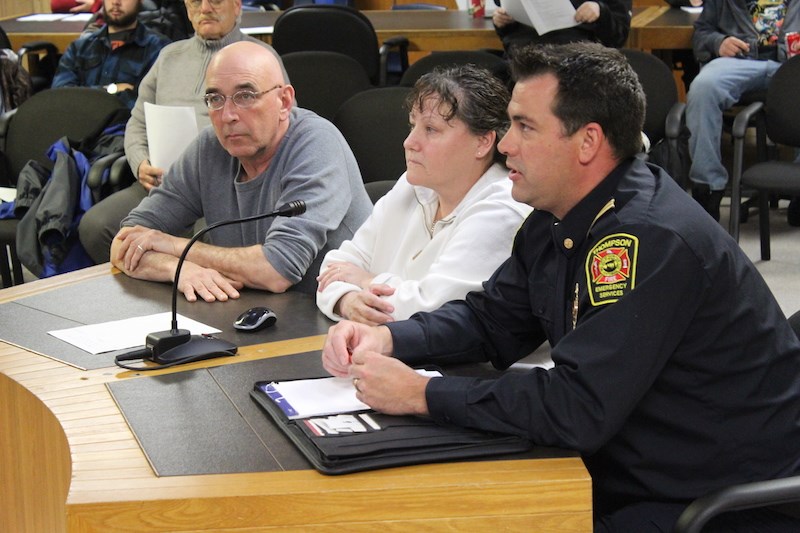With forest fire season around the corner, council played host to a group of fire safety experts during their March 26 city council meeting.
Consisting of fire protection officer Shauna Kortz, regional forester Bruce Holmes and Thompson Fire & Emergency Services deputy fire chief Mike Bourgon, this group said they are in the final stages of preparing a community wildfire protection plan for Thompson.
Even though the Hub of the North hasn’t been in proximity to a serious forest fire since the spring/summer of 1989, Holmes said nationwide safety procedures concerning these natural disasters have change in the wake of massive blazes that ripped through Slave Lake in 2011 and Fort McMurray in 2016.
“This will be a value to the City of Thompson, because we’re preparing before the event. Fort McMurray is preparing after the event,” said Holmes.
While the plan hasn’t been completed yet, the group revealed that the final document will derive a lot of its core elements from FireSmart Canada, a set of guidelines designed to prepare urban centres located near forested areas for wildfire outbreaks.
The government of Manitoba has already endorsed this set of guidelines, given that the province experienced more than 550 fires in the 2017 forest fire season.
Since Thompson is geographically isolated and surrounded by boreal forest, Kortz said a big part of preparing for an outbreak involves managing all the trees, bushes and dry grassy areas near one’s residence.
“We want to reduce fire intensity as influenced by the surrounding vegetation, so we’re encouraging reduction of all fuel loads,” she said.
Bourgon said residents can make their residences even more secure by ensuring that they have working sprinklers around the house, since more than 50 per cent of homes destroyed by wildfires come as a result of falling embers.
“Depending on what you have around your home … it’s possible that a fire is quite some distance away but those firebrands will come near your homes and potentially get into your eavestroughs and get into your cedars.”
Moving forward, Bourgon said they’re hoping to complete this document–which will contain a full pre-response plan, sprinkler deployment plan and other methods of mitigating the damage brought on by an out-of-control wildfire – by the end of April.
“The wildland fire we can’t necessarily control, but what we want to do is we want to stop the urban fires,” he said. “Stopping that transition significantly reduces the likelihood of a disaster, so that’s where FireSmart comes in.”
The next council meeting is April 9 at 7 p.m.




